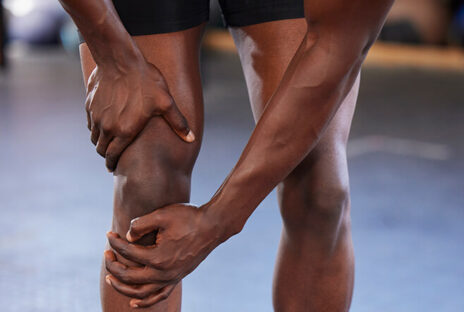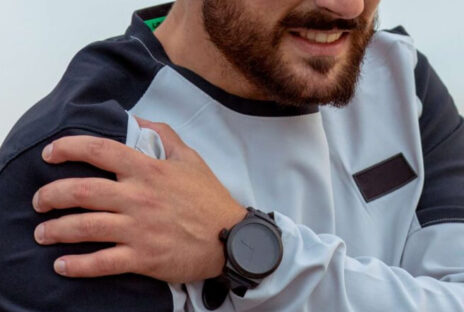Simple soreness or serious injury? Understanding shoulder pain from throwing
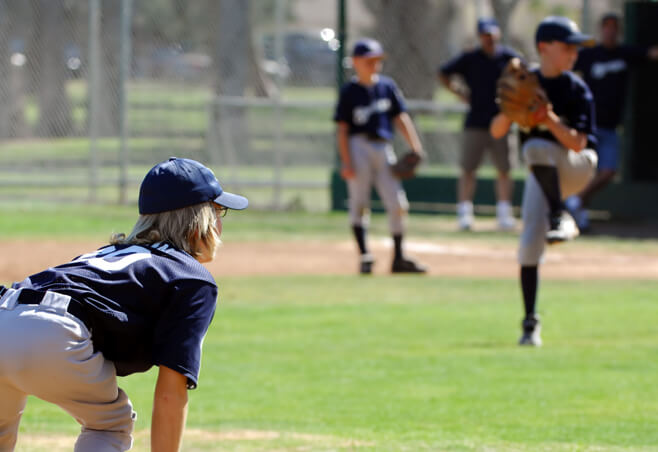
The shoulder is a complex system of bones, muscles, tendons, ligaments and joints working together to produce motion and strength. Any of those components can be a source of shoulder pain from throwing or overhead athletic activities. The symptoms of the most common problems overlap, so it might take a specialist to diagnose the cause of our pain.
Among athletes, shoulder pain from throwing or swinging is a common symptom of a rotator cuff or labral injury. Sports medicine specialists see a lot of baseball, volleyball, tennis and pickleball players experiencing shoulder pain from a rotator cuff injury or other impingement. Jobs that involve strenuous lifting or continuous overhead motion may cause similar pain. They include construction, painting, assembly lines and loading delivery trucks.
Keep reading to learn about the underlying causes of shoulder pain from throwing and other overhead arm use and how they are treated.
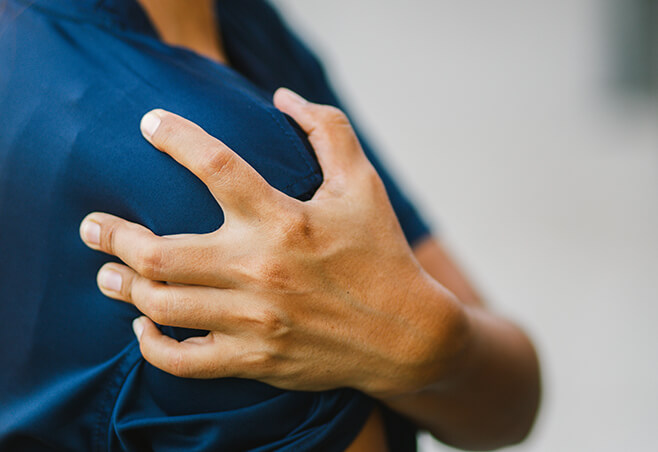
Factors that contribute to shoulder pain after throwing
Shoulder pain from throwing motions is usually a result of these factors:
- Repetitive stress or overuse
- Poor biomechanics and techniques
- Weak or unstable shoulder joint
Common causes of shoulder pain from throwing
Shoulder anatomy is made up of an upper arm bone (humerus), the shoulder blade (scapula) and the collarbone (clavicle). The round end of the humerus fits into a socket in the shoulder blade. The collarbone connects the shoulder blade to the breastbone. Various tendons, ligaments, joints and muscles connect and stabilize the bones.
Shoulder pain from throwing can cause problems in any of the shoulder components. The major sources of pain are:
- SLAP tears
- Biceps injuries
- Impingement
- Instability
- Glenohumeral internal rotation deficit (GIRD)
- Scapular rotation dysfunction (SICK Scapula)
- Rotator cuff injuries
SLAP tears
SLAP stands for “superior labrum from anterior to posterior” tear. It is damage to the labrum, which is the cartilage around the shoulder socket. In baseball, SLAP is the most common season-ending injury connected to shoulder pain from throwing.
Bicep injuries can cause shoulder pain from throwing. The bicep has two tendons connecting it to the shoulder bones. Tendonitis is inflammation of those tendons from extensive overhead throwing. Many times, athletes can be treated without surgery. Full tears may require surgery to resume regular activities.
Impingement
An impingement is a pinch of the rotator cuff tendons in the socket. Cocking the arm to throw a ball is a common cause of an impingement and can lead to a partial rotator cuff tear. You may feel shoulder pain from throwing when you reach overhead or backward.
Instability
Over time, throwing can stretch the ligaments and cause the socket to become loose. The head of the humerus bone might slip out of the socket, causing pain during or after throwing, numbness, reduced velocity of the ball and a feeling that the bone might slip out of the socket.
Glenohumeral internal rotation deficit (GIRD)
Repeated forceful throwing can cause loose ligaments in the front of the shoulder and tight tissue in the back. GIRD occurs when the shoulder loses some range of internal rotation from those conditions. GIRD can lead to other injuries, like rotator cuff tears and impingements.
Scapular rotation dysfunction (SICK scapula)
A SICK scapula is a shoulder blade out of normal position. Telltale signs can include a protruding bone called a “winged scapula,” a lower position than a normal shoulder blade, severe pain at the top, front or back of the scapula and a noticeable hitch or jump when throwing or swinging overhead.
Rotator cuff injuries
The rotator cuff is a system of muscles and tendons that keep the arm bone centered in the shoulder socket and allow for movement in all directions. Pain can result from rotator cuff tear or tendinitis. In addition to acute pain, you may also have trouble lifting your arm while getting dressed or combing your hair.
Rotator cuff tears can be partial thickness or full thickness. The type and location of the tear will help determine the best treatment. Ask your doctor about the differences in these tear types.
What to do if your shoulder hurts from throwing
If you’re experiencing shoulder pain from throwing, pitching or similar activity, first see if it improves with rest, ice and over-the-counter anti-inflammatory medicine, like ibuprofen, acetaminophen or topical cream.
Also, take a break from the activity that you suspect is causing the pain. If the symptoms persist, see a doctor to determine the source of the pain, which will guide the best treatment plan. It’s important to see a specialist experienced with shoulder pain from throwing to make a proper and precise diagnosis.
How specialists diagnose shoulder pain from throwing a baseball
Many of the issues that produce shoulder pain from throwing share similar symptoms, such as the location and severity of the pain. The subtle differences will help a doctor distinguish between various common shoulder conditions.
During a visit, the doctor will ask questions about the pain. Be ready to share details about when and where the pain occurs. For instance, if you are experiencing shoulder pain from baseball pitching, try to remember or write down any of these occurrences:
- Shoulder pain when throwing overhand or in the midst of pitching
- Shoulder pain after throwing ball
- Shoulder pain in throwing motion (what type of motion and during which phase)
- How many pitches you throw before noticing pain
- How many pitches you throw weekly, including games and practice
- What type of pitches you throw the most
Next, a doctor will perform a physical exam to test strength, tenderness and range of motion. In some cases, a shoulder specialist may order diagnostic imaging for a more detailed look at the shoulder. Procedures used to determine the source of shoulder pain from throwing may include X-rays, MRI scans, CT scans, EMG tests and arthroscopy/arthrograms.
Sports that can cause shoulder pain
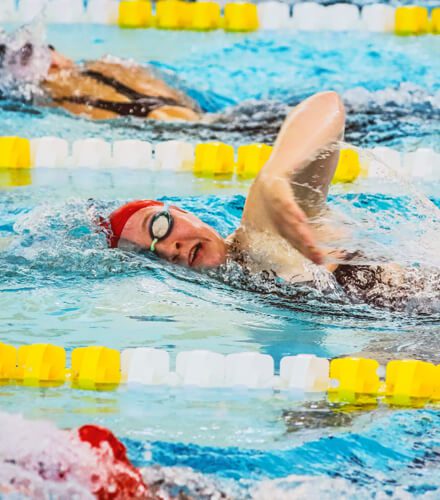
Baseball players are highly susceptible to shoulder pain from throwing ball after ball with heavy force. It’s easy to pick up a pitching rotator cuff injury or impingement when you play the sport frequently, even if your fastball isn’t breaking any records in a summer league.
Other sports that stress the shoulder and cause the same injuries discussed in this article include:
- Softball
- Handball
- Football
- Field events (e.g., shot put, discus, hammer, javelin and pole-vaulting)
- Swimming
- Cricket
- Water polo
- Tennis, pickleball and other racquet sports
Shoulder pain and dysfunction treatment options
Most issues related to shoulder pain from throwing are first treated conservatively. It’s rare for a shoulder specialist to recommend surgery right off the bat (no pun intended).
Rest, ice, anti-inflammatories and a break from the activity are often effective at healing the pain and a tear if the shoulder is still stable. A cortisone shot and physical therapy are other options to relieve more intense pain and swelling and resume daily activities.
Surgery for a pitcher’s shoulder becomes an option when nonsurgical options fail. Most times, a shoulder specialist will recommend arthroscopic surgery to help accurately diagnose inside the joint and determine the best surgical repair technique.
FAQs about shoulder pain from throwing
From prevention to treatment options, here are the answers to the most common questions about baseball-related shoulder pain.
What can I do to prevent shoulder pain when I throw a ball?
Prevention exercises, proper technique and ample recovery time will help keep pain and injuries at bay. Strengthen and stretch the arms, shoulders, back and core. Youth baseball players should follow the USA Baseball’s Pitch Smart guidelines on the number of innings it’s safe for kids to pitch at different ages.
What is Little League shoulder?
Little League shoulder, or pitcher’s shoulder, is an overuse injury in youth players ages 11 to 16. It’s characterized by the widening of the upper arm’s growth plate from extensive overhead throwing. Resting a minimum of three months is typical. If it’s not addressed, it can become a chronic condition and force the athlete to stop playing.
During which phase of throwing do most shoulder injuries occur?
The cocking and throwing phases place the most stress on the rotator cuff. The cocking phase can cause a pinch of the rotator cuff tendons at the back of the shoulder, leading to a partial tear.
How important are pitch counts and rest for avoiding shoulder pain from throwing?
All youth-baseball governing bodies limit the number of pitches per game, based on age. They also recommend a certain number of rest days based on the number of pitches thrown. Observing these guidelines is critical to preventing injuries during youth development.
Florida’s best specialists for shoulder care
Shoulder pain from throwing a baseball or performing other forceful overhead motions can sideline athletes for months and may indicate an injury that will get worse if it’s not treated properly.
Shoulder issues from throwing motions are difficult to diagnose due to their overlapping symptoms fully. The renowned shoulder specialists at the Florida Orthopaedic Institute have the experience to pinpoint the exact cause of shoulder pain and develop a safe, effective, personalized treatment plan.
With locations around Florida, FOI provides patients with comprehensive shoulder treatments and sports medicine services, including diagnostic imaging, physical therapy, cortisone injections, urgent care and surgery centers under one roof.
Schedule with a physician or request an appointment to book an appointment to discuss your shoulder pain and treatment options with an orthopedic physician.
You might also like:
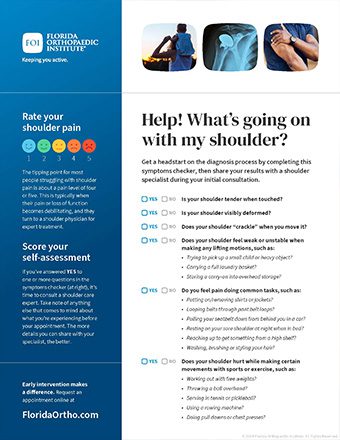
Help! What’s going on with my shoulder?
January 3, 2025

